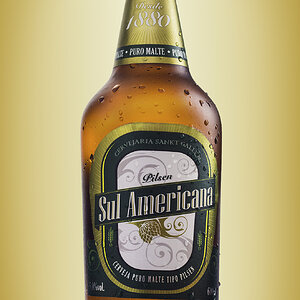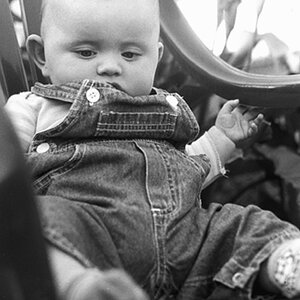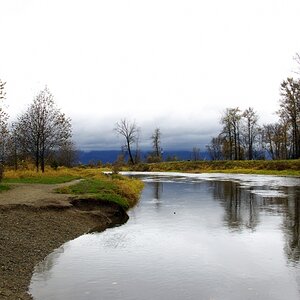Navigation
Install the app
How to install the app on iOS
Follow along with the video below to see how to install our site as a web app on your home screen.

Note: This feature currently requires accessing the site using the built-in Safari browser.
More options
You are using an out of date browser. It may not display this or other websites correctly.
You should upgrade or use an alternative browser.
You should upgrade or use an alternative browser.
Beginner Macro
- Thread starter St3phaniex3
- Start date
St3phaniex3
TPF Noob!
- Joined
- Jan 1, 2016
- Messages
- 38
- Reaction score
- 10
- Can others edit my Photos
- Photos NOT OK to edit
ok - let's start a bit unusual - would you share what was end goal that you had in mind when taking them and what do you like the most in the end results?
My goal is to get sharp detailed images with macro. I am going to be purchasing a new camera hopefully soon. I will be doing a slight upgrade to the D5500 which I'm hoping will help with getting sharper images since it doesn't have the anti aliasing filter. My images seem to lack detail which I try to make up for with editing but I feel it makes them look even worse. So I'm hoping the upgrade will help with taking sharper more detailed photographs.
As @jake337 pointed out your camera is fine. You can go and purchase better one if would like but D5500 is perfectly capable of taking tak-sharp photos. From your photos actually - the photo of the butterfly is really sharp (maybe not perfect but close to). However it has too much per-pixel contrast due to flash pointed directly at the object.
If you want to take really sharp images take into account that in macro photography even if you shoot at f16 you still get very shallow DoF. This means you can't use techniques such as focus lock and recompose. You need to take the photo as soon as your AF locks in or use manual focus and this will bring more challenge to your composition. Even if you move a millimeter since your focus locked before you take the image - the end result will be blurry.
In order to increase DoF - try shooting with closed down apertures - start f5.6 which is the sweet spot for crop sensor cameras before diffraction starts to kick in and then go to f8, f11, f16 - you can compare the difference between DoF and picture sharpness as you go down.
Next is your shutter speed - as you are shooting with flash use your max sync speed with the flash - it's usually between 1/200 and 1/320 sec depending on the camera (not sure which is it for D5500 but you should know of consult your camera manual). If your surrounding is dark enough and you're using f8 or even more closed down aperture your exposure will effectively be the duration of your flash. Lower down the power of the flash and you'll get shorter duration - which will help in taking sharp focus without "motion blur". If you're shooting without flash consider that your shutter speed when shooting macro should be at least twice as high as your lens focal length. So for a 100mm lens on 1.5 crop body (D5500) you get a focal distance of 150mm - make sure your camera shutter speed when shooting macro without flash is at least 1/300 sec.
If your lens has IS - use it, it can make the difference between perfect image and a ruined one.
Practice your shooting technique and steady shooting - try to lean on something sturdy (e.g. a wall) when you shoot - this will minimise any shake on your end. If this isn't work - try shooting with tripod at least in the beginning until you get more comfortable.
With these tips in mind - go ahead and try some more photos and share the result with us.
Thank you for all of that. I currently am using the D5200 but want to upgrade to the d5500. I have researched and learned that the d5200(which I am current using) has the anti aliasing filter but the d5500 does not which will result in sharper images. I've mainly been shooting at f/24 ish range or smaller when the setting allow it. I was using the flashes at their most powerful which was probably why I was getting blown out highlights but I wanted a faster shutter speed. I'll have to try a slower shutter speed but that was the problem in the beginning because my lens does not have image stabilization. I'll also look into getting a tripod but I'm not sure I'll use it much if at all for macro it seems like more of a hassle to carry it around make sure it's set up right and in the right position to take a **** of the bug that has already flown away lol. I know I'm just starting out and eventually I'll find what's best for me but it's always great to learn tips and tricks to help learn along the way!
Thank you again!
The D90 is older than a D5200 as well. I've never used a tripod or a lens with IS/OS or whatever that's called. Here are some images from the D90 and tokina 100mm f2.8 macro with a diffused sb600.
View attachment 116174 View attachment 116175 View attachment 116176
Those are good photos. What do you use for your editing software? (If any) I'm not really sure what the problem with my photos could be other than I need more and more and MORE practice patience and better technique? I still want to get the d5500 (it was actually the camera I wanted instead of the d5200 but my budget just wouldn't allow it) and hopefully it will help even the tiniest bit!
- Joined
- May 1, 2008
- Messages
- 25,422
- Reaction score
- 5,003
- Location
- UK - England
- Website
- www.deviantart.com
- Can others edit my Photos
- Photos OK to edit
I've mainly been shooting at f/24 ish range or smaller when the setting allow it.
If you're looking for ultimate sharpness remember that using smaller apertures only increases the sharpness up to a point. Thereafter diffraction kicks in and will start to soften your results. Yes you get more depth of field, but you lose critical sharpness as a cost.
Around f13-16 is the limit on most camera/lens setups - although the limit is really set by your standards and output size/medium. If you're only posting 1000pixels on the longest side images online you can likely use smaller apertures without much loss in sharpnes at the final size for display.
Note also that for shutterspeeds where the flash is the dominant light source you'll mostly be at 1/200sec (the max sync speed of most cameras) because that's the fastest that the camera can expose for with flash being the dominant light source. Faster speeds and the flash has to pulse the light otherwise you get black lines in the shot - and pulsing light takes away power significantly.
St3phaniex3
TPF Noob!
- Joined
- Jan 1, 2016
- Messages
- 38
- Reaction score
- 10
- Can others edit my Photos
- Photos NOT OK to edit
I've mainly been shooting at f/24 ish range or smaller when the setting allow it.
If you're looking for ultimate sharpness remember that using smaller apertures only increases the sharpness up to a point. Thereafter diffraction kicks in and will start to soften your results. Yes you get more depth of field, but you lose critical sharpness as a cost.
Around f13-16 is the limit on most camera/lens setups - although the limit is really set by your standards and output size/medium. If you're only posting 1000pixels on the longest side images online you can likely use smaller apertures without much loss in sharpnes at the final size for display.
Note also that for shutterspeeds where the flash is the dominant light source you'll mostly be at 1/200sec (the max sync speed of most cameras) because that's the fastest that the camera can expose for with flash being the dominant light source. Faster speeds and the flash has to pulse the light otherwise you get black lines in the shot - and pulsing light takes away power significantly.
Thank you! I guess using such a small aperture size was playing a big roll in my dislike for my image results! Sorry I'm such a beginner :/
Thank you ALL!!! You've all been very helpful! Once I get my new camera and use the RIGHT settings I'll be posting the results!!
davholla
Been spending a lot of time on here!
- Joined
- Jun 16, 2015
- Messages
- 1,557
- Reaction score
- 1,387
- Can others edit my Photos
- Photos OK to edit
Don't worry everyone makes that mistake. I would suggest (and I wish I had done this) get something small and change the settings until you are happy. I did that the other day with a stick insect (I will upload later) and realized that I have been using sub optimal settings for some time.I've mainly been shooting at f/24 ish range or smaller when the setting allow it.
If you're looking for ultimate sharpness remember that using smaller apertures only increases the sharpness up to a point. Thereafter diffraction kicks in and will start to soften your results. Yes you get more depth of field, but you lose critical sharpness as a cost.
Around f13-16 is the limit on most camera/lens setups - although the limit is really set by your standards and output size/medium. If you're only posting 1000pixels on the longest side images online you can likely use smaller apertures without much loss in sharpnes at the final size for display.
Note also that for shutterspeeds where the flash is the dominant light source you'll mostly be at 1/200sec (the max sync speed of most cameras) because that's the fastest that the camera can expose for with flash being the dominant light source. Faster speeds and the flash has to pulse the light otherwise you get black lines in the shot - and pulsing light takes away power significantly.
Thank you! I guess using such a small aperture size was playing a big roll in my dislike for my image results! Sorry I'm such a beginner :/
Thank you ALL!!! You've all been very helpful! Once I get my new camera and use the RIGHT settings I'll be posting the results!!
- Joined
- May 1, 2008
- Messages
- 25,422
- Reaction score
- 5,003
- Location
- UK - England
- Website
- www.deviantart.com
- Can others edit my Photos
- Photos OK to edit
It's boring but you can setup a flat subject with detail (like a coin) at 45 degrees to the camera (so that you 100% will see the plane of focus) and can then take a shot at varying apertures; the only thing that need change is the flash distance/power (ISO low shutterspeed standard 1/200sec). That can give you a chance to compare different apertures in a controlled test.
Like I said its "dull" but it lets you see the actual comparison rather than having different lighting/subjects confusing the issue.
Like I said its "dull" but it lets you see the actual comparison rather than having different lighting/subjects confusing the issue.
St3phaniex3
TPF Noob!
- Joined
- Jan 1, 2016
- Messages
- 38
- Reaction score
- 10
- Can others edit my Photos
- Photos NOT OK to edit
Finally got my new camera (D5500) and I love it!! Here are some new photos I took earlier today. Let me know what you think.


DogDaze
TPF Noob!
- Joined
- Mar 4, 2016
- Messages
- 6
- Reaction score
- 0
- Can others edit my Photos
- Photos NOT OK to edit
you guys pics look good, but with a macro lens or extension tubes, teleconverter or combination the Depth of Field is so shallow, it physically will not let you capture your whole image in focus unless your subject is flat and perpendicular to the camera. post processing (focus stacking) in photo shop is a requirement to get your whole image in focus at 1:1 or greater
St3phaniex3
TPF Noob!
- Joined
- Jan 1, 2016
- Messages
- 38
- Reaction score
- 10
- Can others edit my Photos
- Photos NOT OK to edit
you guys pics look good, but with a macro lens or extension tubes, teleconverter or combination the Depth of Field is so shallow, it physically will not let you capture your whole image in focus unless your subject is flat and perpendicular to the camera. post processing (focus stacking) in photo shop is a requirement to get your whole image in focus at 1:1 or greater
I've never done focus stacking and wouldn't even know where to begin. I don't know how to do much in photoshop either.
I guess even though I most likely won't get much (if any) feedback I'll post some new pics.
jcdeboever
Been spending a lot of time on here!
- Joined
- Sep 5, 2015
- Messages
- 19,868
- Reaction score
- 16,081
- Location
- Michigan
- Can others edit my Photos
- Photos OK to edit
Those are nice. #3/is my favorite
Sent from my XT1254 using Tapatalk
Sent from my XT1254 using Tapatalk
St3phaniex3
TPF Noob!
- Joined
- Jan 1, 2016
- Messages
- 38
- Reaction score
- 10
- Can others edit my Photos
- Photos NOT OK to edit
Those are nice. #3/is my favorite
Sent from my XT1254 using Tapatalk
Well thank you!! I have no idea what it is but it didn't seem to mind me and the camera
- Joined
- Jul 16, 2015
- Messages
- 4,040
- Reaction score
- 4,659
- Location
- Oklahoma
- Can others edit my Photos
- Photos OK to edit
I have identified it.Those are nice. #3/is my favorite
Sent from my XT1254 using Tapatalk
Well thank you!! I have no idea what it is but it didn't seem to mind me and the camera
It appears to be a bug.
Very fine set, there.
petrochemist
TPF junkie!
- Joined
- Mar 9, 2014
- Messages
- 1,873
- Reaction score
- 608
- Can others edit my Photos
- Photos OK to edit
I have identified it.
It appears to be a bug.
Very fine set, there.
A rather vague identification but actually totally incorrect.
No 3 is a fly of some sort, I think a robber fly.
I don't think any of these are technically bugs, though two are probably close enough for the lay man.
Similar threads
- Replies
- 5
- Views
- 3K
- Replies
- 0
- Views
- 319

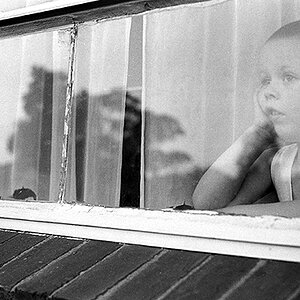
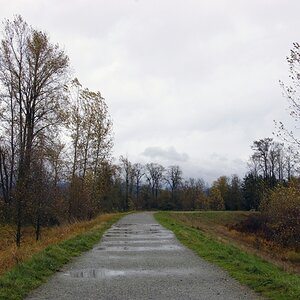
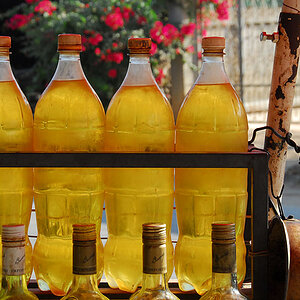
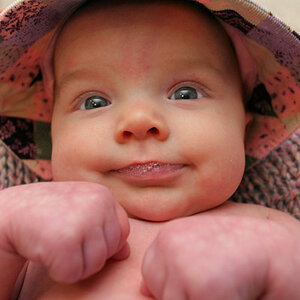
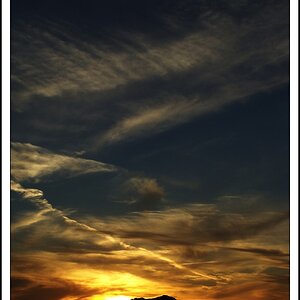
![[No title]](/data/xfmg/thumbnail/31/31085-9786bf0c16c072633ecdfad477c23095.jpg?1619734600)
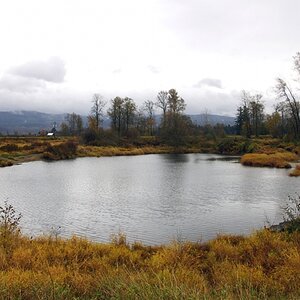

![[No title]](/data/xfmg/thumbnail/35/35929-8650428697cfb142a7b9a4e8ef731178.jpg?1619737232)
